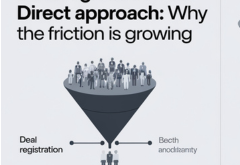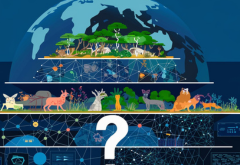By 2026, 30% of enterprises will automate more than half of their network operations, up from less than 10% in mid-2023, according to a new report by Gartner.
Chris Saunderson, Senior Director Analyst at Gartner, noted that infrastructure and operations (I&O) leaders are increasingly turning to AI-driven analytics and augmented decision-making, including intelligent automation (IA), to boost operational resilience, manage complexity, and handle growing data volumes more efficiently through automation.
IA for I&O refers to the use of AI techniques, including generative AI (GenAI), to automate decision-making and execute tasks related to I&O efforts. It is rapidly becoming a critical tool for enhancing business agility and driving more sophisticated I&O services.
Though IA is currently in the “Trough of Disillusionment” stage of Gartner’s 2024 Hype Cycle for I&O Automation, it is projected to achieve mainstream adoption within the next five to ten years.
The introduction of GenAI features has spurred increased demand for IA platforms, offering improved operational capabilities, enhanced efficiency, and deeper insights through automation.
“Providers offering cutting-edge AI tools for IT operations (AIOps), application performance monitoring, and GenAI will play a significant role in shaping the future of IA,” said Saunderson. “Many AIOps and standalone automation providers are likely to expand into IA, either through acquisitions or in-house development.”
Hyper-automation Drives Operational Excellence in Large Enterprises
In addition to IA, hyper-automation remains a core strategy for 90% of large enterprises. “Interest in hyper-automation has surged, particularly following the rapid rise of GenAI since its launch in November 2022,” said Frances Karamouzis, Distinguished VP Analyst at Gartner.
Hyper-automation encompasses the integration of multiple technologies, including AI, machine learning, event-driven software architecture, and robotic process automation, among others. However, fewer than 20% of organizations have mastered measuring the impact of their hyper-automation initiatives.
“Hyper-automation is often part of a larger technological roadmap, with systems of record at one end and AI and GenAI at the other,” added Karamouzis.
The growing demand for operational excellence and business resilience is fueling the expansion of hyper-automation offerings, solidifying its role in modern enterprise operations.
 Latest Technology News Today – Get Latest Information Technology Updates and Services Latest Technology News Today – Get Latest Information Technology Updates and Services
Latest Technology News Today – Get Latest Information Technology Updates and Services Latest Technology News Today – Get Latest Information Technology Updates and Services 









